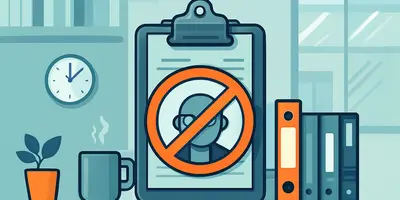
Sep 12, 2025 ● Pretirement.jobs
The AI Age Gap: How AI-Savvy Younger Workers are Outpacing Over-50s in the Job Hunt
For decades, getting a job came down to a few basics: a solid CV, the right skills, and a confident handshake. But today, the job hunt has been completely rewritten—and for Britain's workers over 50, it feels like the new rules are stacked against them.
The battleground for jobs isn't just about who has the best qualifications anymore. It's about who understands the algorithms, applicant-tracking systems, and, most importantly, artificial intelligence that now filter candidates. In this new world, younger workers are using AI to turbocharge their applications. And in the process, they're unintentionally pushing experienced "pretirees" out of the running before a human even gets a chance to see their CV.
A Flood of Polished Applications
Recruiters are getting buried under a mountain of applications at levels that would have been unthinkable just a few years ago. This surge is the direct result of AI-assisted job seeking, which can draft CVs and cover letters, and even generate interview answers at a massive scale.
The data shows a clear divide. According to a 2025 iHire survey:
- More than half of Millennials and Gen Z now lean on AI tools during their job search.
- For Baby Boomers, that number plummets to just 18.5%.
This creates a serious disadvantage for older workers. Their carefully written applications are competing against thousands of machine-optimized CVs, each one meticulously crafted to tick every algorithmic box.
The Trust Gap
It’s not just a matter of who has the tools. There's also a significant trust gap. A 2023 study published in Computers in Human Behavior Reports found that confidence in AI drops sharply with age.
It's an understandable hesitation for many over-50s. But in a hiring process that's increasingly run by algorithms, opting out of AI can mean opting out of the very system that decides who gets noticed.
Falling Behind in the Workplace, Too
The imbalance doesn’t stop at applications. A recent Morning Consult report on the state of workers showed that workplace AI adoption jumped nine points in a single year. Still, older workers are a shrinking part of the user base.
This gap fuels a damaging perception: that older workers are less tech-savvy, even when their experience and skills are more relevant than ever. For businesses under pressure to modernize, that perception often carries as much weight as reality.
Crowded Out, Not Aged Out
These trends are creating a perfect storm. Pretirees already face age bias in hiring, and now they're also being crowded out by a new generation's AI habits. This technology allows applications to be generated faster, in higher volume, and in formats that machines prefer.
Here at Pretirement.jobs, we see this firsthand every day. Our mission is simple: to level the playing field so that proven skill and experience matter more than who's best at writing a prompt.
The challenge isn't that over-50s lack ambition or ability. It’s that the rules of the game have been rewritten by those most willing to embrace AI. Without action, an entire generation risks being locked out of opportunities, not because they can't do the work, but because they never get the chance to prove they can.
The solution lies in providing awareness, training, and tools that help pretirees compete on equal terms. If decades of hard-earned experience are going to remain visible and valued, we have to ensure AI becomes an equalizer, not a roadblock.



